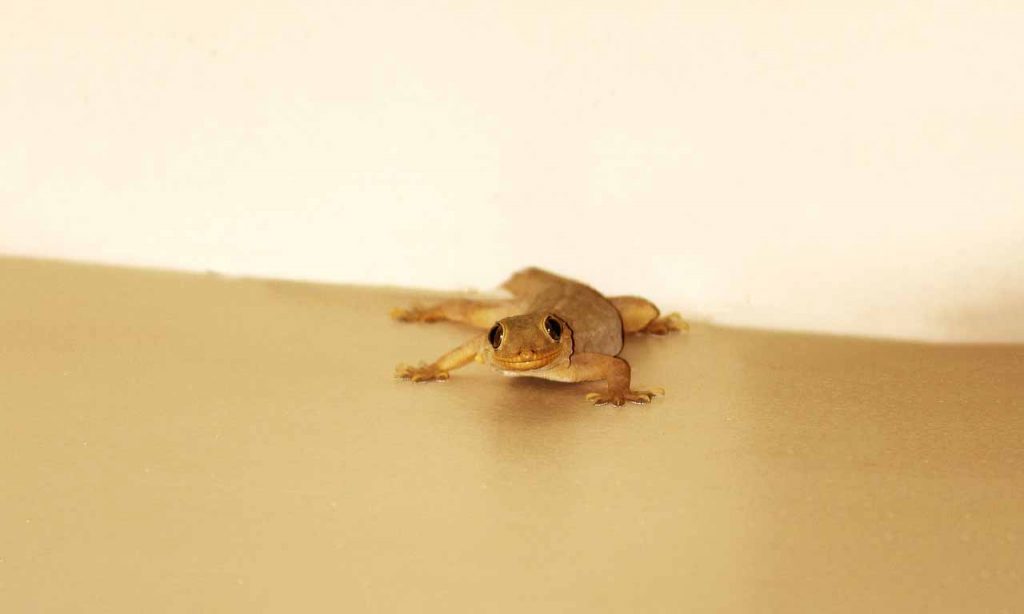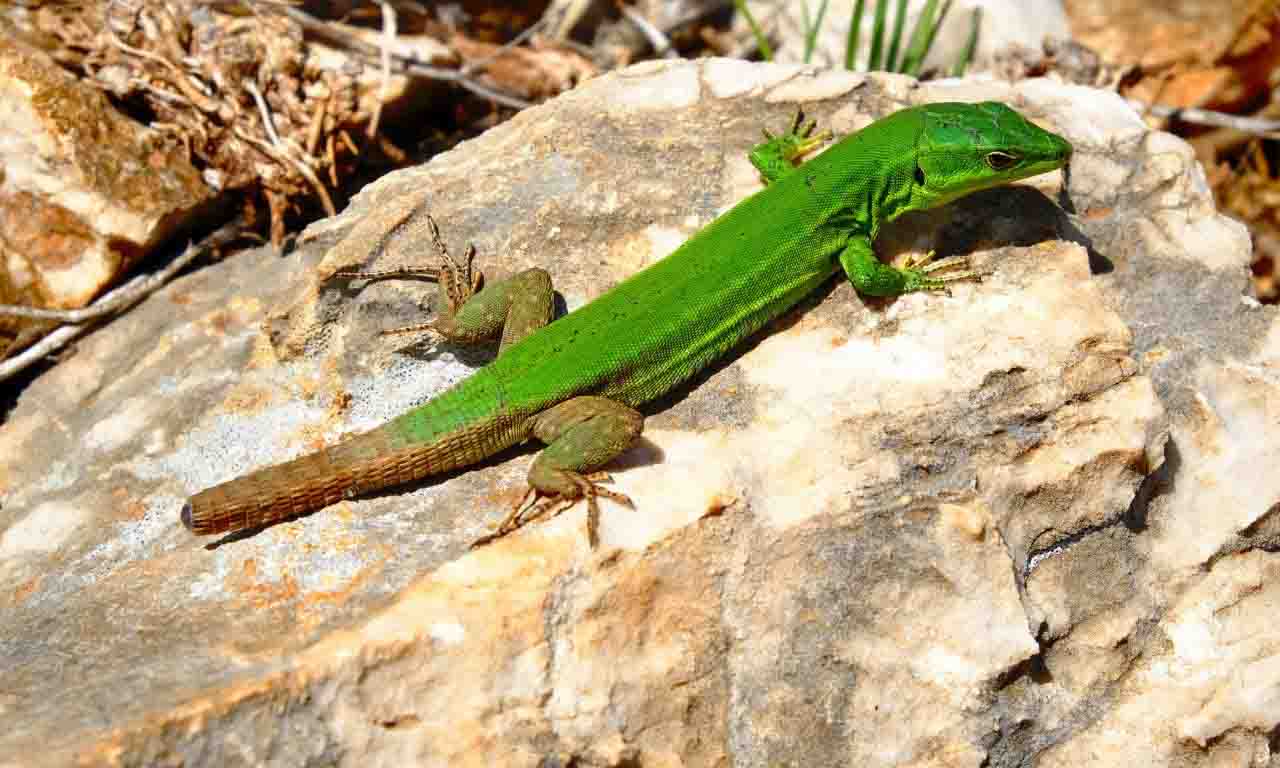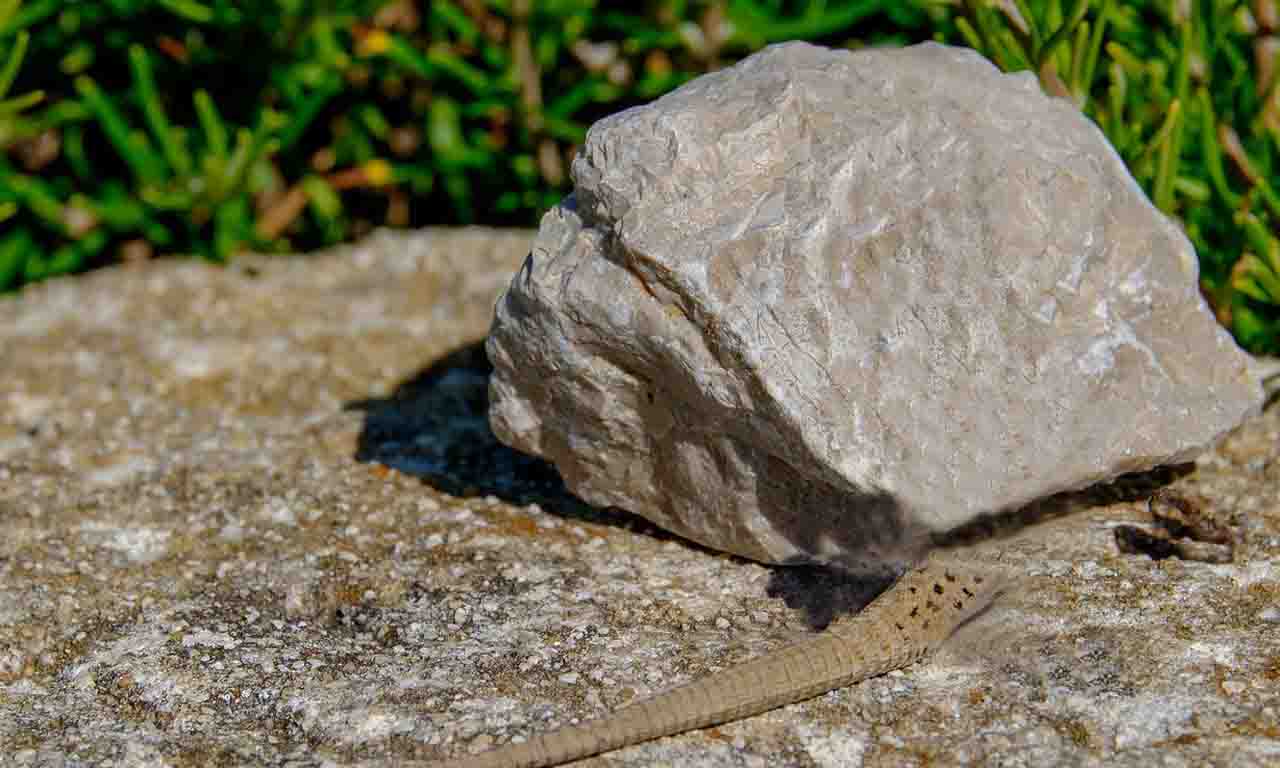
 Lizard often loses its tail. It’s a common phenomenon. As a child, we probably have seen some tailless lizard, and it fascinated us. It feels like these lizards are like completely different species which they are not of course, but how do they do it? How they survive without a tail? Do they do live for hours and then die? There is a lot of question about it so let’s find out.
Lizard often loses its tail. It’s a common phenomenon. As a child, we probably have seen some tailless lizard, and it fascinated us. It feels like these lizards are like completely different species which they are not of course, but how do they do it? How they survive without a tail? Do they do live for hours and then die? There is a lot of question about it so let’s find out.
Can a lizard die without its tail? Lizard won’t die if it loses its tail. Lizards lose their tail as a defense mechanism. If predators catch a lizard, the lizard will lose its tail to save their life. Although losing their tail is not very convenient for them because they store fat in it, but this technique is handy in saving their lives.
Lizard store fats inside their tail and losing that means missing the energy reservoir, but it won’t be a problem if the lizard lives in a place where there is abundant food, but in areas where food is scarce, it can get quite problematic. The lizard needs to find food to keep itself going.
They cannot go to starvation because they have lost their tail. Evolution has granted them the gift of regeneration which allows them to regenerate their tail.
Why A Lizard Will Not Die Without Its Tail?
The lizard doesn’t lose their blood after they lose their tail. They will take some damage, but it’s not life-threatening. This is the benefit of evolution which granted the lizard the biology that has the option of losing its tail.
This option is not present in most other species which means if other animals lose its tail, it will die due to blood loss and infection but in lizard, none of these factors plays a role, i.e. they don’t lose too much blood, and they don’t get infection rather their body starts regenerating.
It’s because of the regeneration factor along with their specialized biology a lizard can survive even after losing its tail.
The New Tail
 The new tail has a different shade. You can easily differentiate the shade. This tail is much longer and tenders, and it’s like a fresh new muscle. It takes a few weeks to months to fully regrow their tail. Depending upon the diet and where the lizards live.
The new tail has a different shade. You can easily differentiate the shade. This tail is much longer and tenders, and it’s like a fresh new muscle. It takes a few weeks to months to fully regrow their tail. Depending upon the diet and where the lizards live.
Losing the tail is an excellent strategy for survival. When a predator attacks a lizard from it’s back, then the lizard will lose their tail to protect themselves. Since the tail is also a muscle and has all the necessary components like fat, protein etc., so when the predator eats the tail, it forgets about the lizard.
This gives the lizard the perfect opportunity to escape. They can perform this trick only once, i.e. when they have the tail. If a predator attacks them when lizards don’t have their tail, then the predator can capture them much more comfortably because there will be no deceiving.
However, when they regrow it back, they can do it again if they feel threatened. Most of the time the lizard doesn’t bleed after losing its tail, but it does some damage because the nerve endings get disconnected, and tissue gets damaged, but those are not enough to kill the lizard.
Why Is Lizard Tail Important?
Apart from storing fat lizard tails have its own significance. Losing a tail is quite problematic for the lizard, so they do it when they don’t have any other choice. The tail is a beneficial thing for maintaining their body balance.
When a lizard is jumping, it uses its tail to balance their body, and without a tail, it can get quite difficult for the lizard. Without the tail, the lizard can crash land. Their tail also plays a vital role in defending themselves. They use their tail to defend themselves when they are fighting among each other or if some predators attack them.
Although their tail is not always enough to ward off predators because some predators are too big and they don’t stand a chance against them, but their tail helps them in defending themselves. Their tail also helps them in swimming. Without a tail, it can get tough to swim as they have to spend a lot more energy to move forward and they will tire soon.
Their tails also keep predators away by giving the impression that they are big. A lizard’s tail is considerable compared to the lizard size and because of that losing a tail means making them look almost half of the size.
Predators that otherwise won’t attack a lizard will attack them because they look small, other lizards can attack a lizard that doesn’t have its tail because they will seem smaller and weaker. However, it doesn’t necessarily mean that the attacking lizard will win against the tailless lizard, but it’s undoubtedly a disadvantage.
All of this thing reduces their survival rate. As you can see, lizard’s tail is essential to them, but they have to lose it when they are in trouble. In the meantime, when the tail is growing if some predators attack them, it can get quite challenging to escape.
Do All Lizard Lose Their Tail?
No, not all lizard lose their tail. However, the majority of their species can lose their tail. Big lizard-like Komodo dragon or monitor lizard don’t lose their tail. Their tail is an essential aspect, and losing its tail can have a severe impact on survival.
Since these lizards are big and there are very few predators, they don’t have to lose their tail to protect themselves. Their tail is big, thick and heavy losing that means they will appear small and will be attacked by their group members, by snakes and even other predators that usually don’t attack them.
So, it meaningless for a big lizard to lose its tail. Smaller lizards developed this strategy because it increases their survival rate and also their tail is not very effective against big predators.
Can lizard Eat Their Tail?
Yes, a lizard can eat their tail when they lose it as it contains a lot amount of fats. But most of the time the predator may end up eating the tail so the lizard won’t be able to eat it. When the tail is attached, the lizard won’t eat its tail, but when detached, it can be helpful for the lizard.
Since they store so much fat in their tail, losing it is a bad option, but that is the best option for saving their life. When fighting against other lizards, the lizard won’t eat the tail of the other lizard if they are attached. But that tail cuts out then the lizard can eat it.
This is a prominent behavior in lizards, but we won’t usually witness that. Lizards are extra careful because a predator has attacked them in that spot so they will wait until they feel entirely safe and that when they will eat their own tail.
Can Lizard Tail Move After It’s Cut?
 Yes, the tail moves for a while after it is severed. It is a fascinating phenomenon because the tail doesn’t lay still on the ground after getting severed it twists, jumps and moves in a very complicated way. These movements attract the predator, and the predator will try to eat it, thus saving the lizard’s life.
Yes, the tail moves for a while after it is severed. It is a fascinating phenomenon because the tail doesn’t lay still on the ground after getting severed it twists, jumps and moves in a very complicated way. These movements attract the predator, and the predator will try to eat it, thus saving the lizard’s life.
But due to these complex movements, some predator is unable to capture it which is a double benefit for a lizard because the lizard will be able to consume the tail and regain the energy stored in it. Scientists are still baffled about how their tail perform such complex movement even after getting severed.
The tail doesn’t have eye, ears or anything to understand the situation but it still does the movement making it feeling like it’s alive. It’s almost like the tail has it’s own intelligence. The tail is a significant proportion of lizard’s body which is enough to intrigue a predator.
All of these factors come handy for saving a lizard life. Although the tail loses its movement after a few minutes and becomes idle, that time frame is more than enough to delude the predators.
Regeneration Of Tail
Most lizards lose their tail and then grows back, and some lizard loses their tail and doesn’t grow it back. They can detach the tail to save their life, but they cannot regrow it.
Iguanas can lose and then grow their tail; on the other hand, the crested gecko will lose their tail but will not grow it back. As you can see, lizards can survive without their tails, thus removing any misconception about whether they can survive after losing their tail.
Conclusion
Lizards won’t die if they lose their tail. They can do it when they are in trouble. This is the last resort so unless and until there is an absolute need, the lizard will not let its tail fall. The tail stores fat, so it’s important to them, but life is more precious, so they prefer life over their tail and loses their tail when in serious trouble.
Welcome to my blog. I have been doing pest control for years since my house, garden and pets were always attacked by various kinds of pests and as a result I had to know proper pest control techniques that works. In this blog I share all the tips and tricks that I know and I hope you’ll find it helpful.
